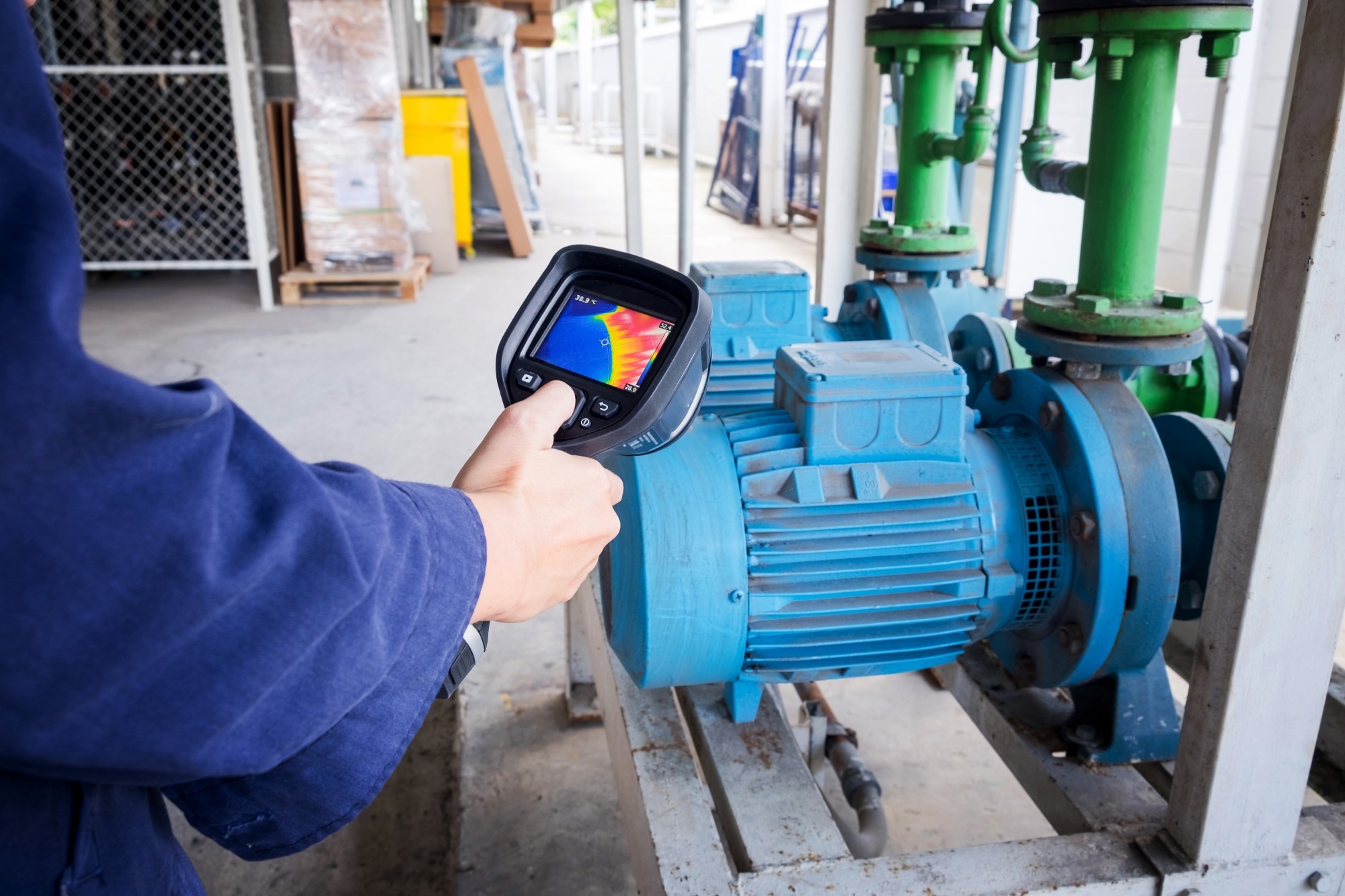The field of science and industry is brimming with that drive efficiency, safety, and environmental compliance. An example of such innovation is the NDIR gas sensor. This technical solution has become a crucial tool across various sectors, from ensuring the safety of homes and offices to monitoring industrial emissions.
To explain how the NDIR gas measurement functions, we explore its mechanics and applications in this article.

Image Credit: Joyseulay/Shutterstock.com
The Fundamental Principle of NDIR Gas Detection
NDIR (Non-Dispersive Infrared) gas detection, a widely used method in science and industry, measures specific gas concentrations through infrared absorption by gas molecules.
Central to the NDIR gas sensor is the emission of infrared light. When directed into a sampling chamber, it interacts with gas molecules, each possessing a unique absorption band, such as the distinct absorption spectra of carbon dioxide.
As the light passes through the gas, specific wavelengths are absorbed, and an optical filter ensures only the relevant wavelengths for the measured gas reach the detector, enhancing measurement precision.
The remaining IR radiation reaching the detector is inversely linked to gas concentration. Many sensors include a reference channel to further enhance precision by comparing IR radiation levels.
The Five-Step Process of NDIR Gas Sensing
- Infrared Emission: The NDIR gas sensor initiates operation by emitting an infrared light beam, which is directed through the target gas sample.
- Gas Absorption: Gas molecules absorb particular infrared light wavelengths. This absorption depends on the gas's molecular structure and the wavelengths emitted by the sensor.
- Light Detection: After absorption, the remaining light continues its path and eventually reaches a thermopile detector, a vital component in the NDIR gas sensing process.
- Signal Conversion: The thermopile detector, upon receiving the remaining light, measures its intensity. This measurement is then converted into an electrical signal. The strength and characteristics of this signal directly correspond to the amount of light absorbed by the gas molecules.
- Gas Concentration Analysis: The generated electrical signal undergoes analysis to determine the gas concentration in the sample. This determination relies on sophisticated algorithms and calibration data, ensuring accuracy and reliability.
Applications of NDIR Gas Sensors in Modern Settings
NDIR gas sensors have found broad application due to their reliability, specificity, and versatility. In residential and office environments, these sensors play a pivotal role in detecting gases that can adversely affect oxygen levels, thus ensuring the safety of occupants.
The significance of these sensors is emphasized by their incorporation into many health safety systems as standard equipment.
In the industrial landscape, NDIR gas sensors play an even more prominent role. Industries are continuously under scrutiny to comply with environmental regulations. Monitoring emissions is not just a regulatory requirement but also a demonstration of the commitment of industries to sustainability.
NDIR gas sensors, with their precision in detecting a variety of gases, are the preferred devices for such monitoring. The NDIR gas sensor, with its intricate design and profound impact, serves as evidence of progress in science and industry. Its role in safeguarding homes, offices, and the environment cannot be overstated.
Dexter Research has consistently been at the forefront of these innovations. The understanding of the intricacies of NDIR gas sensing is combined with a dedication to providing solutions that are not only technologically advanced but also tailored to the unique needs of clients.

This information has been sourced, reviewed and adapted from materials provided by Dexter Research Center, Inc.
For more information on this source, please visit Dexter Research Center, Inc.